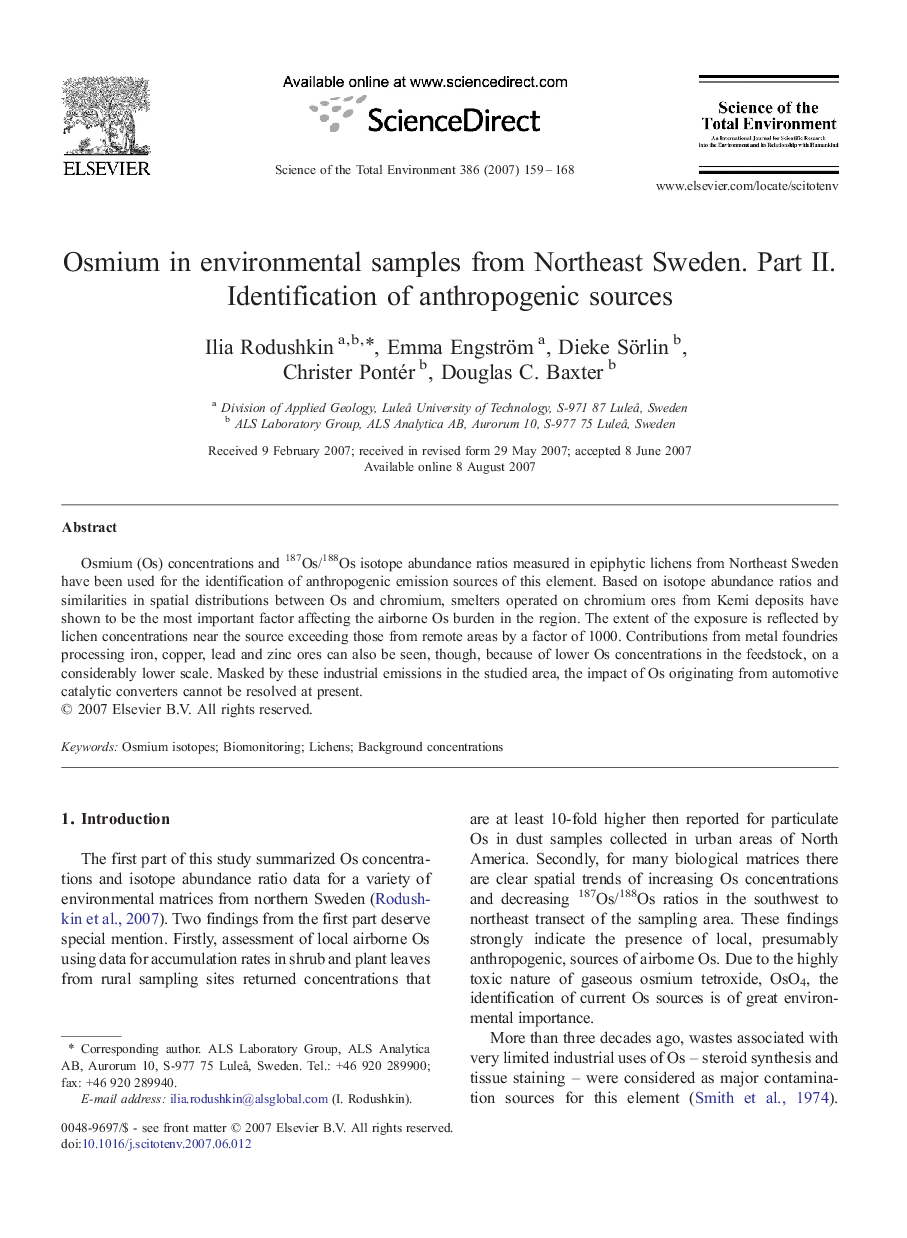| Article ID | Journal | Published Year | Pages | File Type |
|---|---|---|---|---|
| 4432911 | Science of The Total Environment | 2007 | 10 Pages |
Osmium (Os) concentrations and 187Os/188Os isotope abundance ratios measured in epiphytic lichens from Northeast Sweden have been used for the identification of anthropogenic emission sources of this element. Based on isotope abundance ratios and similarities in spatial distributions between Os and chromium, smelters operated on chromium ores from Kemi deposits have shown to be the most important factor affecting the airborne Os burden in the region. The extent of the exposure is reflected by lichen concentrations near the source exceeding those from remote areas by a factor of 1000. Contributions from metal foundries processing iron, copper, lead and zinc ores can also be seen, though, because of lower Os concentrations in the feedstock, on a considerably lower scale. Masked by these industrial emissions in the studied area, the impact of Os originating from automotive catalytic converters cannot be resolved at present.
